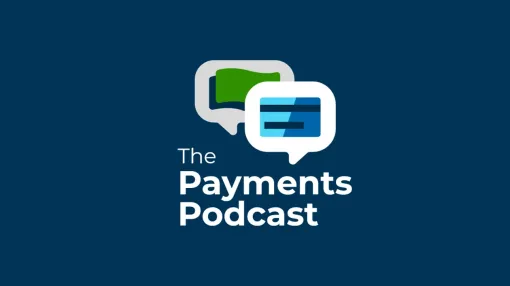I read a lot lately about the “consumerization” of business banking. Businesses, many sources say, want the embedded features and dashboard visibility consumer-based fintechs provide. Said one payments executive in PYMNTS.com in 2022: “It’s been a necessity in order to get business done.”
Then recently, a colleague challenged me to stress-test this consumerization theory. What do business customers want from their banks? And is it really different from what consumers want from theirs? Turns out the differences are substantial. Take a March 2023 consumer survey from investment site Fool.com. When asked to rank the importance of factors in choosing their bank, embedded features didn’t even crack the top ten. The top factors mentioned were fraud protection, quality customer service, mobile access, low checking fees, ATM access and good brand reputation. Dashboards? Didn’t show. Embedded features like ‘buy now, pay later (BNPL)?’ Again, a no-show.
Then I set out to find out what commercial enterprises wanted from their banks. Here I turned to a familiar source, the 2023 Bottomline Business Payments Barometer. And in an unforeseen plot twist, I found that businesses do indeed want “consumer-like” features, but they’re not the features that align with the Fool and other research I found. They are the features that consumer-based fintechs base their value propositions on. As the Payments Barometer found when it asked 1,600 finance leaders across Great Britain and the United States what they expected from their banking relationships, accessible and reliable business services (like online banking) took the top spot. The remaining expectations were fair and transparent pricing, access to and visibility of data, industry regulatory advice, innovative technology offerings and embedded finance.
So, the script has been flipped. There's an overlap in what consumers and businesses seek from their banks. And I can’t say these findings come as a complete surprise to me or my colleagues that deal with the bank channel here at Bottomline. In fact, I met with a prospective bank channel partner the other day who expressed a desire to build all their business payments network and other digital banking infrastructure in-house. However, they were concerned about their ability to allocate time and resources to do it without taking their eye off other important issues like continuing to improve their customer experience. I would argue that the right partner would give them the confidence to outsource their innovations.
Because we know that corporates expect a lot from their banking relationships, and it’s our job to facilitate those expectations. So, when I look at the list from the Business Payments Barometer research, my reaction is: How do corporates shop that list? Because if they had to go to provider “A” for embedded finance and then provider “B” for regulatory advice, and then provider “C” for innovative APIs, they would need to spend all their time managing their ecosystem. That can be avoided when one partner can provide the necessary solutions to fulfill those expectations. Fintechs are expected to be innovative and have a pulse on what it takes to meet customer expectations like those laid out in the Business Payments Barometer. If they’re doing their job right, they can innovate to keep pace with the market and stay ahead of it.
Bottomline’s general manager of digital banking, Kevin Pettet, said recently: “We were the first to identify the emerging trend where B2B expectations were becoming more consumer-like. It led us to be among the first financial technology companies to invest heavily in UI/UX. In addition, we are leading with our Engagement Optimizer analytics offering that allows banks to better identify trends and transaction patterns across their customer base and benchmark them against a cohort of peer banks to understand performance. But overall, we stay focused on positioning our customer, the bank, to win the battle for primary ownership of the customer relationship.”
Couldn’t agree more. Kevin articulates the need to innovate with the balance in market trends. Here’s an example of how that looks in action. We know that real-time payments are trending and being recognized for their speed and utility as a liquidity tool. We need to add that solution to our product suite, but we must also balance that with what we hear in the market. Security is, arguably, a more consequential requirement than real-time is. So is the need to accommodate a client’s entire payables space that mixes real-time capabilities with virtual card, basic and premium ACH, and - though we don’t see it as optimal – paper check. Use all those, and you open the door to one of the expectations I think corporates should have from their fintech partners, and that’s rebates.
The ability to strike that balance and fulfill these expectations depends on communication and education almost as much as it does on technology. In fact, the research respondents in both countries assigned high rankings to the need for a “responsive and empathetic relationship” as a key expectation. As my UK-based digital banking colleague Matt Shaw told me recently, his customers are preparing for a complete overhaul of the digital payments infrastructure called the New Payments Architecture initiative, alongside other payments and fraud-related mandates. “In addition to the technology involved, we need to educate banks about the changes coming, and they, in turn, need to educate their customers,” Shaw said. “The relationship between a bank and their customers is about more than processes and platforms.”
One more thing. It might go without saying that automation is the foundation of everything that should define a good banking relationship. Pricing, data transparency, embedded finance – all these depend on automated payments networks and digital processes. Doesn’t matter whether you’re a young adult opening the first bank account or a huge corporation managing billions in payments. The present and future of payments are based on digital infrastructure and automated payments. And if that seems a bit daunting, you should have another expectation: that the partner you choose for that future can do the entire job efficiently and securely.


